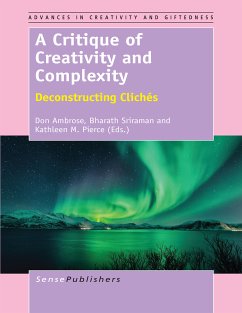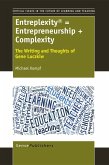In an increasingly complex world the natural human inclination is to oversimplify issues and problems to make them seem more comprehensible and less threatening. This tendency usually generates forms of dogmatism that diminish our ability to think creatively and to develop worthy talents. Fortunately, complexity theory is giving us ways to make sense of intricate, evolving phenomena. This book represents a broad, interdisciplinary application of complexity theory to a wide variety of phenomena in general education, STEM education, learner diversity and special education, social-emotional development, organizational leadership, urban planning, and the history of philosophy. The contributors provide nuanced analyses of the structures and dynamics of complex adaptive systems in these academic and professional fields.
Dieser Download kann aus rechtlichen Gründen nur mit Rechnungsadresse in A, B, BG, CY, CZ, D, DK, EW, E, FIN, F, GR, HR, H, IRL, I, LT, L, LR, M, NL, PL, P, R, S, SLO, SK ausgeliefert werden.









